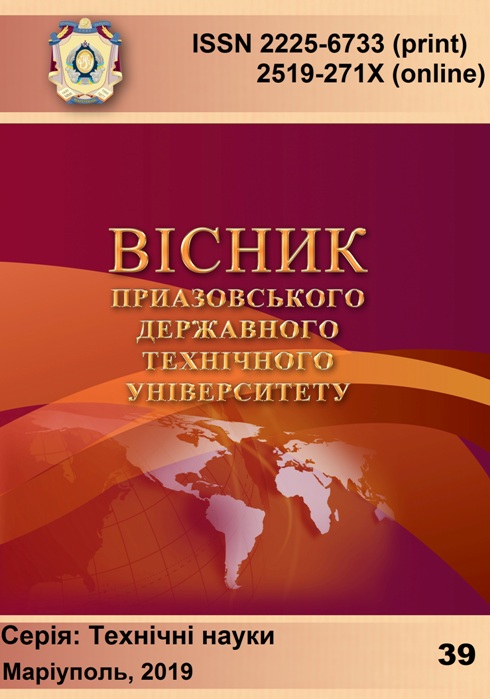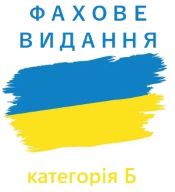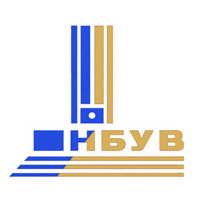Регулювання магнітного поля при односторонньому високошвидкісному зварюванні труб для газо- і нафтопровідних магістралей
DOI:
https://doi.org/10.31498/2225-6733.39.2019.201052Ключові слова:
магнітне дуття, електромагнітна сила, регулювання магнітного поля зварювального струму, здрібнення мікроструктури, ударна в’язкість зварних з’єднань, одностороннє високошвидкісне зварювання труб для газо- і нафтопровідних магістралейАнотація
Встановлені закономірності регулювання магнітного поля при односторонньому високошвидкісному зварюванні труб. Розроблено спосіб одностороннього високошвидкісного зварювання труб для газо- і нафтопровідних магістралей з двостороннім струмовідводом і регулюванням магнітного поля зварювального струму шляхом пропущення струму попереду і позаду дуги у співвідношенні I1/I2 = 1,7-1,9, що запобігає магнітне дуття, забезпечує рівновагу дуги, стабільність процесу, підвищення якості та ударної в’язкості зварних з’єднаньПосилання
Перелік використаних джерел (ДСТУ):
Уайт Р.М. Квантовая теория магнетизма / Р.М. Уайт. – М. : Мир, 1972. – 306 с.
Корольков П.М. Природа возникновения и методы устранения магнитного дутья при сварке / П.М. Корольков // Сварочное производство. – 1998. – № 5. – С. 6-8.
Вlakeley P.J. Magnetic arc blowcanses, effects and cures / P.J. Blakeley // Metal Construction. – 1988. – № 2. – Vol. 20. – Pp. 10-13.
Norman E.W.D. Magnetic arc blow. Part 1. The origin of magnetic fields / E.W.D. Norman // Metal Construction. – 1984. – № 7. – Vol. 16. – Pp. 441-445.
Blakeley P.J. The origin and effects of magnetic fields in electron beam welding / P.J. Blakeley, A. Sanderson // Welding Journal. – 1984. – № 1.– Pp. 42-49.
Norman E.W.D. Magnetic arc blow. Part 2. Effects and solutions / E.W.D. Norman // Metal Construction. – 1984. – № 8. – Vol. 16. – Pp. 496-500.
Сварка с электромагнитным перемешиванием / В.П. Черныш, В.Д. Кузнецов, А.Н. Брискман, Г.М. Шеленков. – К. : Техника, 1983. – 127 с.
Рижов Р.М. Магнітне керування якістю зварних з’єднань / Р.М. Рижов, В.Д. Кузнецов. – К. : Екотехнологія, 2010. – 288 с.
Черныш В.П. Зависимость параметров управляющего магнитного воздействия от энерговложения встык при дуговой сварке / В.П. Черныш, Р.Н. Рыжов // Автоматическая сварка. – 1998. – № 5. – С. 49-51.
References:
White R.M. Kvantovaia teoriia magnetizma [The Quantum Theory of Magnetism]. Moscow, Mir Publ., 1972. 306 p. (Rus.)
Korolkov P.M. Priroda vozniknoveniia i metody ustraneniia magnitnogo dut’ia pri svarke [The nature of occurrence and methods for eliminating magnetic blast during welding]. Svarochnoe proizvodstvo – Welding production, 1998, no. 5, pp. 6-8. (Rus.)
Вlakeley P.J. Magnetic arc blowcanses, effects and cures. Metal Construction, 1988, no. 2, vol. 20, pp. 10-13.
Norman E.W.D. Magnetic arc blow. Part 1. The origin of magnetic fields. Metal Construction, 1984, no. 7, vol. 16, pp. 441-445.
Blakeley P.J., Sanderson A. The origin and effects of magnetic fields in electron beam welding. Welding Journal, 1984, no. 1, pp. 42-49.
Norman E.W.D. Magnetic arc blow. Part 2. Effects and solutions. Metal Construction, 1984, no. 8, vol. 16, pp. 496-500.
Chernysh V.P., Kuznetsov V.D., Briskman A.N., Shelenkov G.M. Svarka s elektromagnitnym peremeshivaniem [Welding with electromagnetic stirring]. Kiev, Tekhnika Publ., 1983. 127 p. (Rus.)
Rizhov R.M., Kuznetsov V.D. Magnіtne keruvannia iakіstiu zvarnikh z’єdnan’ [Magnetic quality control of welded joints]. Kiev, Ekotehnologiya Publ., 2010. 288 p. (Ukr.)
Chernysh V.P., Ryzhov R.N. Zavisimost’ parametrov upravliaiushchego magnitnogo vozdeistviia ot energovlozheniia vstyk pri dugovoi svarke [Dependence of the parameters of the controlling magnetic effect on the butt-in energy input during arc welding]. Avtomaticheskaia svarka – Automatic Welding, 1998, no. 5, pp. 49-51. (Rus.)
##submission.downloads##
Як цитувати
Номер
Розділ
Ліцензія
Журнал "Вісник Приазовського державного технічного університету. Серія: Технічні науки" видається під ліцензією СС-BY (Ліцензія «Із зазначенням авторства»).
Дана ліцензія дозволяє поширювати, редагувати, поправляти і брати твір за основу для похідних навіть на комерційній основі із зазначенням авторства. Це найзручніша з усіх пропонованих ліцензій. Рекомендується для максимального поширення і використання неліцензійних матеріалів.
Автори, які публікуються в цьому журналі, погоджуються з наступними умовами:
1. Автори залишають за собою право на авторство своєї роботи та передають журналу право першої публікації цієї роботи на умовах ліцензії Creative Commons Attribution License, яка дозволяє іншим особам вільно розповсюджувати опубліковану роботу з обов'язковим посиланням на авторів оригінальної роботи та першу публікацію роботи в цьому журналі.
2. Автори мають право укладати самостійні додаткові угоди, які стосуються неексклюзивного поширення роботи в тому вигляді, в якому вона була опублікована цим журналом (наприклад, розміщувати роботу в електронному сховищі установи або публікувати у складі монографії), за умови збереження посилання на першу публікацію роботи в цьому журналі.









